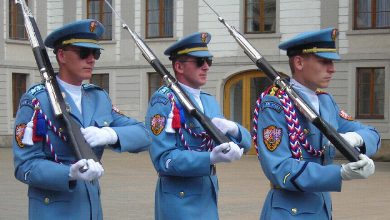
The Spanish flu which began in 1918 was one of the most lethal pandemics in the Modern Age. It infected about one-third of the population, and had a considerable death toll, although the worldwide exact number is still debated. The overall number of deaths starts from 21.5 millions, goes up to 50 millions, and some scholars even suggest 100 millions as a definite estimate.
What is a pandemic?
Even today, the common flu often causes epidemics, that is outbreaks of a disease contained within a particular region or population. In temperate climates like Europe, seasonal flu epidemics occur mainly during winter, as we have all experienced. It is only when an epidemic starts to spread worldwide that becomes what is known as a pandemic. As defined by the World Health Organisation: “a pandemic is the worldwide spread of a new disease. A pandemic occurs when an influenza virus which was not previously circulating among humans and to which most people don’t have immunity emerges and transmits among humans”. In the last 300 years we have had nine pandemics: the Spanish flu was the second one, and the last one was the swine flu in 2009.

Typically a pandemic happens when a flu jumps from one species to another. Sometimes, it is possible for a subject to be infected at the same time by different strains, for example a swine and a human flu. More commonly, a strain that infects an animal mutates and acquire the ability to infect humans. The Spanish flu seems to belong within the latter category, as discovered by looking at a reconstructed virus. This was possible thanks to the analysis of old samples of victims, obtained also by digging up a mass grave in the Alaska permafrost.
How the Spanish flu developed
Notwithstanding its name, the Spanish flu didn’t come from Spain. Thanks to Spanish neutrality in World War I, local newspapers weren’t subject to war censorship and were just the first to openly write about the epidemic. The other States involved in the World War suppressed the news, but at the same time underestimated the flu. The armies from both sides preferred to celebrate heroic death on the battlefield instead of deaths by disease. For example, German death cards rarely mentioned flu as a death cause.
The Spanish flu hit in three waves: the first in the spring of 1918, the second in the autumn, and the third in the winter of 1918-1919. The first wave was quite mild and not unlike a normal flu. Only with the second wave it became apparent that it was quite different. Obviously the death rate was higher than average, but that wasn’t the only peculiarity. Usually, common flu hits harder on older and younger people, as their immune systems are unable to battle the virus effectively. On the other hand, the Spanish flu was extremely effective on young adults, like soldiers on the battlefronts. Even the symptoms were way more lethal than those of a normal flu, including cyanotic skin and bloody sputum.

Occasionally, it is said that the demobilisation of national armies brought the flu in the various States. However, this seems to be historically incorrect, as the armies massively demobilized only after the third wave. Scholars have proposed different places of origin. These include a hospital camp in France, a military base in Kansas and even China (carried by the Chinese Labour Corps), all which suffered heavily from the flu. But ultimately, the origin of one of the deadliest maladies in European – and human – history is still unknown.





